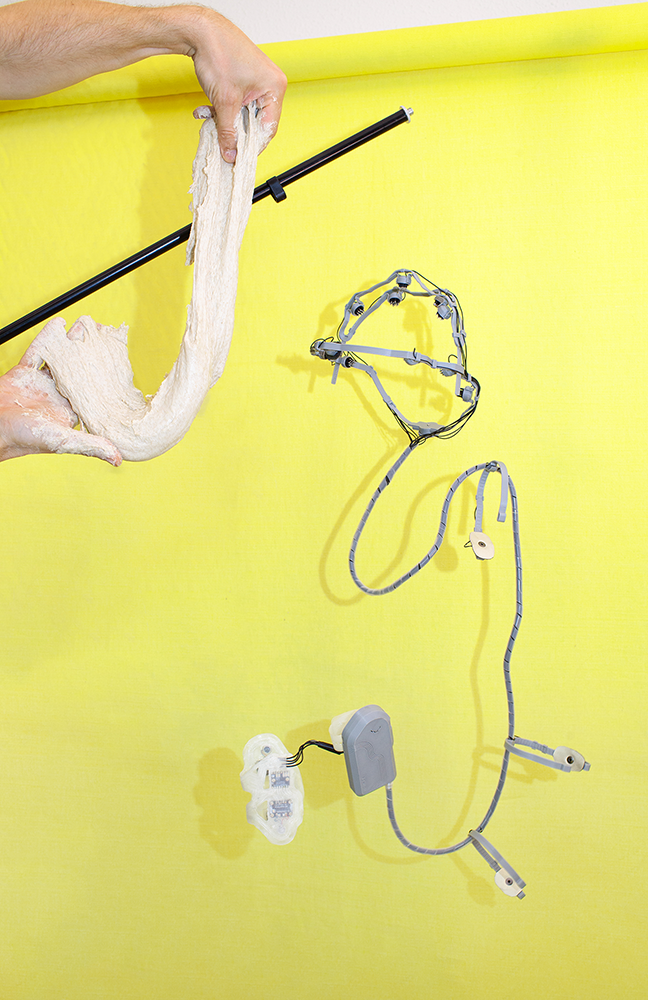“On the Search for Deliciousness”
Text: Professor Charles Spence, Head of the Crossmodal Research Laboratory, University of Oxford
The search for deliciousness, at least according to the North American biologists Rob Dunn and Monica Sanchez can be linked to the evolution of flavour and is a key part of what makes us human. As they put it: “In short, our human evolutionary story is a story of flavour and deliciousness, and the story of flavour and deliciousness is a story of physics, chemistry, neuroscience, psychology, farming, art, ecology, and evolution.” Indeed, noted gastronomes such as Anton Brillat-Savarin (1835) have long been on the trial of what exactly it is that makes certain foods taste delicious. Although Dunn and Sanchez do not specifically talk about bread in their book, Dunn has written elsewhere about the science behind delicious sourdough bread. Dunn starts one article by posing the following question: “how does flour, water, bacteria and wild yeast from the air result in something as delicious and as unique as a loaf of sourdough?” His suggestion is that the bacteria found on the hands of bakers (not to mention in the spaces that they inhabit) are crucially important in this regard.
According to a number of influential commentators, such as the North American author Harold McGee, molecular gastronomy may hold the answer. McGee describes the latter as “the scientific study of deliciousness”. Peter Barham, a physicist from the University of Bristol, together with colleagues from the Department of Food Science at the University of Copenhagen also consider molecular gastronomy as lying at the heart of the search for deliciousness, pronouncing that: “We take a broad view of Molecular Gastronomy and argue it should be considered as the scientific study of why some food tastes terrible, some is mediocre, some good, and occasionally some absolutely delicious. We want to understand what it is that makes one dish delicious and another not, whether it be the choice of ingredients and how they were grown, the manner in which the food was cooked and presented, or the environment in which it was served.” Meanwhile, the authors behind the 10 Principles of Modernist Cuisine are also keen to stress the fundamental need for chefs to: “always strive to produce the most delicious, technically exquisite food”. But is deliciousness in bread, or any other food product for that matter, something that can be assessed and/or promoted by means of an analytic scientific approach? According to Schmidt and Mouritsen (2020, p. 2), meanwhile, : “In the present context, meat elicits umami taste as it is rich in free glutamate and free inosinate, which we over time have come to associate with deliciousness (Mouritsen & Styrbaek, 2014).”
On the analytic versus holistic approach to deliciousness
Specifically with regard to the world of wine, North American, Clark R. Smith, of Vinovation Inc., thinks not. The controversial vinologist created something of a stir a few years ago when, in an issue of Vineyard and Winery Management, he complained about the analytical approach to winemaking that was apparently advocated by the UC Davis wine program. In a commentary provocatively titled Does UC-Davis have a theory of deliciousness?, Clark suggested that the scientific analytic approach was often responsible for making clean but dull wines. Instead, Clark argued for a fusion of the analytic approach to wine-making with an “older, visceral, holistic method of assessment”, in order, hopefully, to produce an integrated view of what makes wine “delicious”. Translating the debate to the world of bread, one might perhaps want to contrast the approaches that have been championed, on the one hand, by the likes of Chad Robertson of Tartine Bakery in California, with the much more rigorously scientific approach to bread making epitomized by the likes of Nathan Myhrvold and Francisco Migoya in their five-volume Modernist Bread, on the other.
One of the replies to Clark’s broadside on the art and science of wine-making from Jim Lapsley He argued that quality (or deliciousness in Clark’s terminology) should not be considered as an objective absolute property of a food, but rather as depending on the taster’s viewpoint. As Lapsley notes: “A concept of deliciousness is not coded somewhere in the genes. Rather it is an individual judgment that involves likes and dislikes and generally requires a social and personal context that is most often learned. Ask yourself: Did you like your first taste of beer or did you find it unpleasantly bitter? Do you like it now? Well, your frame of reference has changed (and perhaps your taste buds too). Although we can recognize wine styles, the assessment of relative quality between wines of two different styles or within one particular style is ultimately a personal or hedonic judgment.” Interestingly here, while various commentators have been debating the concept of deliciousness, and how best to achieve it, in the world of wine, some of the most creative individuals of the kitchen have been suggesting that chefs should be striving to deliver more than simply just deliciousness in the food/dishes that they deliver to their customers.
What lies beyond deliciousness?
In their 2006 ‘Statement on the new cooking’, top chefs Ferran Adria, Heston Blumenthal, and Thomas Keller, together with Harold McGee took great pains to emphasize the importance of deliciousness to modern(ist) cooking. At the same time, however, they also stressed that what they are after goes beyond merely delicious food to include those dishes that the diner will find ‘stimulating’. At one point, writing that: “We do not pursue novelty for its own sake. We may use modern thickeners, sugar substitutes, enzymes, liquid nitrogen, sous-vide, dehydration, and other nontraditional means, but these do not define our cooking. They are a few of the many tools that we are fortunate to have available as we strive to make delicious and stimulating dishes.” The Michelin-starred Spanish chef Andoni Luis Aduriz, of Mugaritz near San Sebastian has been pursuing the latter position in some of his dishes. A decade ago, Andoni had the following to say, in one interview: “You know, I went to cooking school decades ago, and there they taught me how to make delicious food. It's not my goal to make delicious food anymore. I want to make interesting food.” Indeed, this chef is famous for, amongst many other things, serving the occasional dish that he knows many of his guests will not like the taste of, because they help to illustrate a particular narrative function within the fabulous multi-course meals served in the restaurant.
Ultimately, as one of the most symbolic and historic of our fermented foods, not to mention one that took on such a special role in the home during the early stages of the Covid pandemic, it is presumably unlikely that a purely analytic, scientific strategy is ever going to provide a definitive answer to the question of what, exactly, makes bread, or at least some of it, so delicious. Instead, a more holistic artistic approach is likely also needed, one that allows the consumer to literally taste the idiosyncratic hand of the maker. That being said, the question of whether bread – that seemingly magical mixture of flour, water, bacteria, and wild yeast – can, or even should be interesting/stimulating, rather than just delicious, is one that, for now at least, I better leave unanswered.
1 Dunn, R., & Sanchez, M. (2021, p. xvi). Delicious: The evolution of flavour and how it made us human. Oxford, UK: Princeton University Press.
2 Brillat-Savarin, J. A. (1835). Physiologie du goût [The philosopher in the kitchen / The physiology of taste]. J. P. Meline: Bruxelles. Translated by A. Lalauze (1884), A handbook of gastronomy. London, UK: Nimmo & Bain.
3 Dunn, R. (2018). Inside the fascinating (and delicious!) science of sourdough bread. Ideas TED, December 19th. https://ideas.ted.com/inside-the-fascinating-and-delicious-science-of-sourdough-bread/; Dunn, R. (2018). Never home alone: From microbes to millipedes, camel crickets, and honeybees, the natural history of where we live. New York, NY: Basic Books.
4 McGee, H. (1984/2004). On food and cooking: The science and lore of the kitchen (Rev. Ed.). New York, NY: Scribner.
5 Barham, P., Skibsted, L. H., Bredie, W. L. P., Bom Frøst, M., Møller, P., Risbo, J., Snitkjær, P., & Mortensen, L. M. (2010, p. 2315). Molecular gastronomy: A new emerging scientific discipline. Chemical Reviews, 110, 2313-2365.
6 Spence, C., & Youssef, J. (2018). Assessing the long-term impact of the molecular gastronomy movement on haute cuisine. International Journal of Gastronomy & Food Science, 14, 35-44. https://doi.org/10.1016/j.ijgfs.2018.10.001.
7 Schmidt, C. V., & Mouritsen, O. G. (2020). The solution to sustainable eating is not a one-way street. Frontiers in Psychology, 11:531.doi: 10.3389/fpsyg.2020.00531; Mouritsen, O. G., & Styrbaek, K. (2014). Umami: Unlocking the secrets of the fifth taste. New York, NY: Columbia University Press.
8 Smith, C. (1995). Does Davis have a theory of deliciousness? Vineyard and Winery Management, July/August, 8-10.
9 Robertson, C. (2010). Tartine bread. San Francisco, CA: Chronicle Books.
10 Myhrvold, N., & Migoya, F. (2017). Modernist bread. The Cooking Lab; see also Whitley, A. (2006). Bread matters. Fourth Estate,
11 Lapsley, J. (1995). Tastes great! No, less filling! Vineyard & Winery Management, November/December, 56-62.
12 Adria, F., Blumenthal, H., Keller, T., & McGee, H. (2006). Statement on the ‘new cookery’. The Observer, December 10th. http://www.guardian.co.uk/uk/2006/dec/10/foodanddrink.obsfoodmonthly.
13 Ulla, G. (2012). Chef Andoni Luis Aduriz on Mugaritz and deliciousness. Eater, May 15th. https://www.eater.com/2012/5/15/6586849/chef-andoni-luis-aduriz-on-mugaritz-and-deliciousness.
14 Ammann, J., & Ritzel, C. (2021). The soothing effect of bred in the Covid-19 pandemic. Baking Europe, Autumn, 6-9.
15 Geissler, L. (2018). Time works. The Ingredient, April, 64-67.
16 Hayward, T. (2014). The cult of inconsistency. FT Weekend Magazine, October 10th. http://www.ft.com/intl/cms/s/0/41cb3e4c-4e66-11e4-bfda-00144feab7de.html.
17 Forkish, K. (2012). Flour water salt yeast: The fundamentals of artisan bread and pizza. Ten Speed Press.

















































